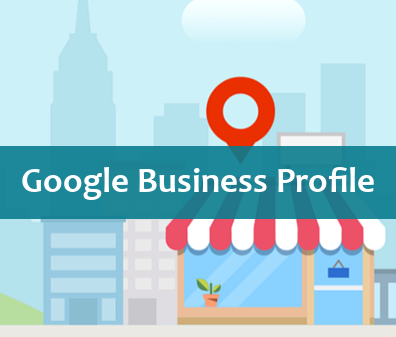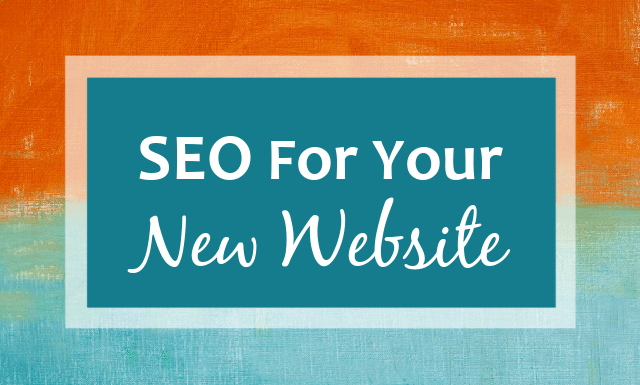When you’ve put in the hard work and expense of building a brand new website created, you want the world to know. I had an eye-opening experience with a client a few years ago, one that perfectly illustrated that I needed to be a better educator for my clients.
After launching a new site, I called my client and said, “Your site is live!” Joy and happiness ensued.
Then he immediately did a Google search on his company name: zip. Then his own name: zilch. Finally, he searched for his primary service in his city: nada. There were no search results listing his new website. His excitement rocketed straight through disappointment and landed on despair. How could this be???
Do Websites Just “Show Up” in Search Results?
Let’s say that Barry Baker, known for his buttery biscuits, hires me to build a website for his new store, Baked Goods by Barry. His website’s address is bakedgoodsbybarry.com. I build and launch his website, and I submit it to all of the major search engines.
Once I’ve done that, people can type bakedgoodsbybarry.com into a browser and be directed to the new site. Awesome! Now, what if someone types in any of these into a search engine:
- baked goods by Barry
- Barry Baker
- Barry’s buttery biscuits
Will Barry’s new website show up on page #1 of the search results? Will it show up at all?
Nope. Why not?
Search Rank is Earned Over Time
What people often don’t understand about building a website is that you have to spend time marketing it after launch. There’s no such thing as “if you build it, they will come”. Instead, you have to build it, tell everyone you know about it, and promote it. You have to literally send people to your new website.
You can do this with an email message, a text or Slack message, or by sharing a link to your site on your social media platforms.
If you spend the money and time to have a site built but don’t invest in on-going marketing and promotion services, you will have wasted your initial investment.
Google will not magically start showing your site in search results. You have to guide the algorithms by putting in place a marketing strategy that sends signals to Google that you are a real business who offers quality services.
So…what do you do to get the word out there? Here are a few ways you can start marketing your site post-launch.
Develop A Solid Content Strategy

Writing and publishing new content on your site is essential if you want to invest in email marketing, social media posting, and paid ads. You can send people to your site all day long, but if you have nothing of value to keep them on the site, they will leave. Posting real information that answers their most pressing questions or addresses their biggest pain points will help them feel confident in your services.
Keep it fresh.
Send Out a Monthly Email Newsletter
Email newsletters are the best way to continually get your services and products in front of people. It’s a great way to build relationships as well as keep existing clients coming back. Newsletters can be time-consuming, if you’re writing long-form content from scratch. An easier way to get started is to toss all your blog and social media posts from the month into a newsletter and hit send.
Start with newsletters before diving into email marketing. Here’s the difference between them.
Pro Tip: An effective email marketing campaign will share real information with the reader that sends them back to your site for more information.

Set Up a Google Business Profile
A Google Business Profile is a free listing for your business that allows you to show up in search results and on Google maps. Think of this listing as your second website because it has the ability to rank for keyword searches, bring in inquiries and phone calls, and traffic to your site. If you have a brick-and-mortar office or storefront, it can bring in actual human traffic.
Whether you are a business that has a physical location or not, you can set up the profile to share pertinent information about the services and products you offer.
Repurpose for Social Media
Interacting with your customers on social media makes your brand more personal and helps you build brand loyalty. And when you share your blogs and link back to your site, you can drive traffic back to your site. There’s a good chance your followers will stay on your site longer because they are warm leads – they already have an interest in what you have to say. The longer people stay on your site, the better your site will rank in search results.
The content that you post on social media and the content on your website should have something in common: your brand voice. The language and personality should match. Keeping a consistent brand voice shows authenticity to your audience and helps them trust you.
Here’s a handy guide of the social media platforms you should consider for your type of business.
LinkedIn: The most overlooked and under-utilized platform for B2B. Can be used for blogging, just like your website. LI content can reach your professional network and rank on Google.
Facebook: Has far and away the most users, allowing you to reach a bigger audience. Ideal for service providers like consultants, freelancers and agencies.
Instagram: Great for reaching both consumers and other businesses. Its visual format is perfect for artists and other creatives, or if your target audience is young adults.
Tik Tok: Fast-paced trends make Tik Tok a fit for any business that excels in creating frequent and engaging content. Ideal for ecommerce brands and for connecting with the Gen-Z audience.
Invest in Paid Ads
You can send a positive feedback loop to Google by increasing the amount of traffic that goes to your website. The fastest way to drive traffic to your site is to set up paid campaigns. Depending on your industry, you may have a better outcome with Google ads versus social media ads and vice versa. However, any type of ad will increase the number of visitors on your site which gives you more exposure and the potential of getting leads.
Show up in online searches
Now that you know search rank is earned over time, let’s talk about which SEO methods are best for your business.

